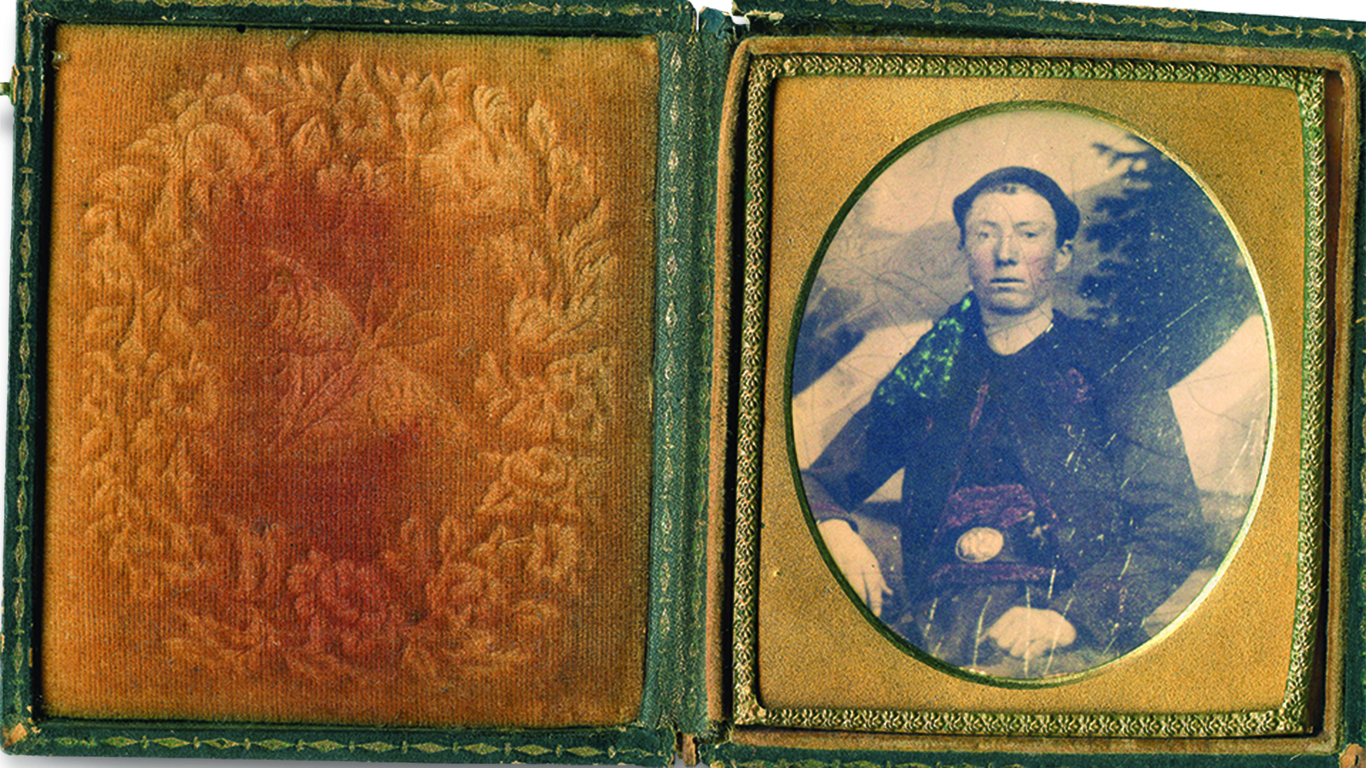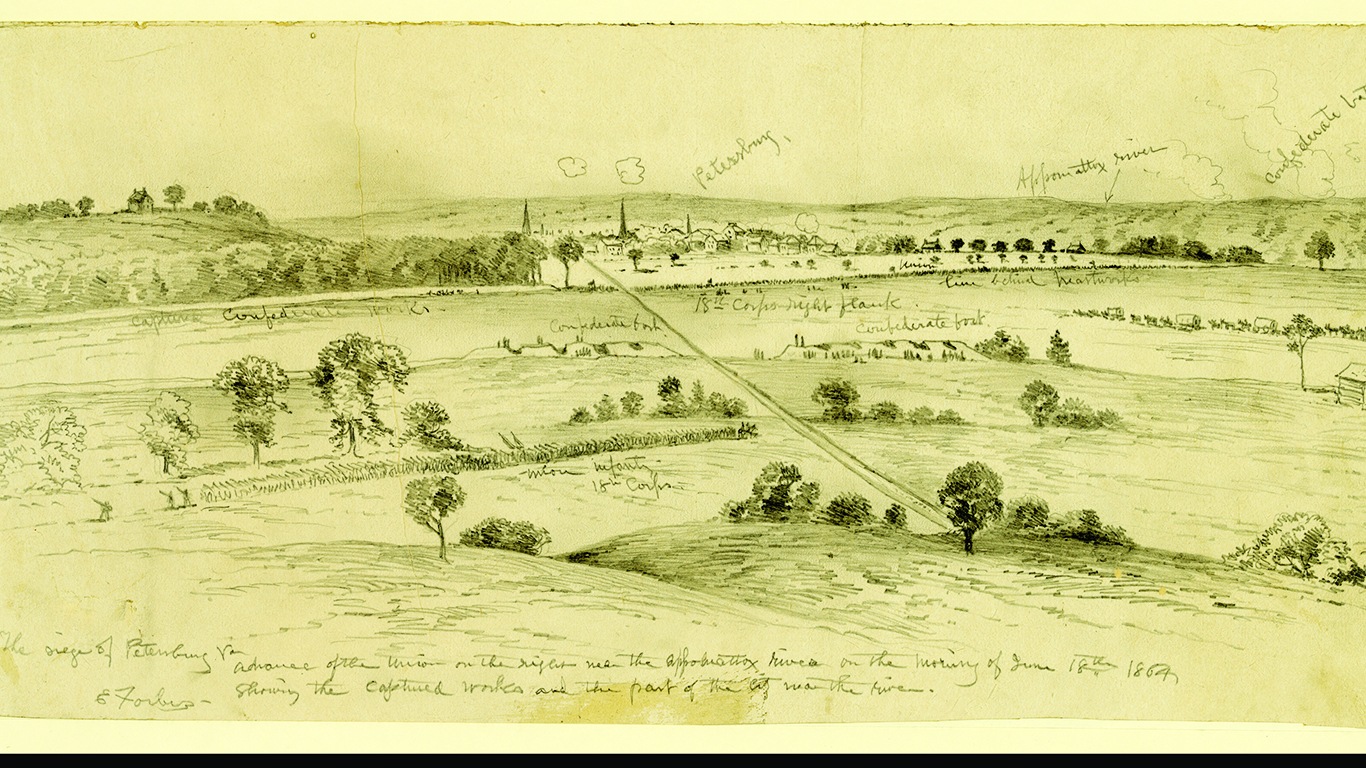Irish-born teenager John Brosnan took command at Petersburg and made a futile rescue attempt that cost him his arm
[divider]FROM JUNE 15 TO JUNE 18, 1864, just days after its devastating defeat at Cold Harbor, Va., the Army of the Potomac made several attempts to storm the Confederate defenses at Petersburg, hoping to capture the key railroad town south of Richmond and avoid a long and costly siege. Repeated, often uncoordinated Yankee assaults over those four days, in what is known as the Second Battle of Petersburg, failed woefully—resulting in nearly 11,500 total Union casualties to only 4,000 Confederate. Petersburg would stay in Rebel control for another nine months.
[divider_flat]Overlooked somewhat in this period of Federal frustration were the efforts of the 164th New York Infantry—in particular a 17-year-old immigrant from Ireland, Sergeant John Brosnan of Company E. The 164th, part of the 4th Brigade of Brig. Gen. John Gibbon’s 2nd Division in the 2nd Corps, saw heated fighting on June 16-17.
Recruited and organized in New York City, the 164th was mustered into Union service on November 19, 1862, at Newport News, Va., under the command of Colonel John E. McMahon. For 12 months from December 1862, Brosnan’s unit served as one of the five “Irish Regiments” of the Corcoran Legion, a brigade formed from New York’s Irish-American population by Ireland-born Brig. Gen. Michael “Mick” Corcoran. Over that period, the Corcoran Legion principally manned the defenses of Washington, D.C.
During the June 17 fighting at Petersburg, the 164th failed to achieve a breakthrough and soon all of Company E’s officers lay dead or had been dragged, wounded, to a makeshift field hospital behind the lines. Command of the company fell to Brosnan.
Brosnan, whose family had fled famine and poverty in Ireland, enlisted in response to President Abraham Lincoln’s calls for volunteers during the second year of the war. Whether Brosnan joined out of patriotic attachment to his adopted country or simply wanted to wear one of the 164th’s brilliantly colored Zouave uniforms remains unknown. What is for sure is that with Brosnan, Company E got a young man who could fight.
Upon taking command that bloody afternoon, Brosnan implored his exhausted men to follow him in another charge against the Rebel works. This renewed effort, however, fared no better than their previous attacks and the remnants of Company E took shelter from the intense cannon and rifle fire in a narrow ravine within the killing ground. Although the ravine still left the men dangerously exposed, for the moment, at least, darkness and makeshift breastworks kept Company E from further losses.
At first light on the 18th, Brosnan and his company remained in the ravine, lying low to avoid deadly Rebel musketry. Minié bullets sailed over the men’s heads, the characteristic “buzzing” noise of the near-misses sounding like angry hornets. Suddenly, Brosnan heard the groaning of a badly wounded comrade coming from an exposed position near the ravine—a blue-clad boy lay some distance away in full view of the enemy trenches, an apparent casualty from one of the many failed assaults, unable to drag himself to cover.
Though Brosnan realized the danger involved, he never hesitated, leaping from the ravine and toward the wounded man. Miraculously, he reached the stricken figure without being hit and discovered it was Company E’s Corporal Michael Carroll. “For God’s sake, Sergeant,” Carroll reportedly cried, “Lie down or you will be killed!” Ignoring the warning, Brosnan picked up Carroll and staggered back to the relative safety of the ravine, bullets flying in his direction. As he neared the ravine, Brosnan felt a hard hammer blow just above his right elbow—his arm shattered beyond hope of repair by a solid lead .58-caliber bullet.
Carroll’s injuries proved mortal, and later that day Brosnan had his damaged arm amputated. Two weeks later, on July 1, 1864, he celebrated his 18th birthday while recovering in a field hospital.
One of approximately 30,000 Union soldiers who underwent amputations during the war, Brosnan was among the fortunate 75 percent to survive the initial operation. Because unsterilized instruments were typically used, many amputees contracted post-operation infections, leading to gangrene and usually further surgery. Death was likely.
Brosnan eventually recovered and was medically discharged from the army in February 1865. Though missing a limb, he remained in otherwise robust health and returned to civilian life. During the Petersburg siege, the 164th New York saw action at the battles of Jerusalem Plank Road (June 21-23,1864), Second Deep Bottom (August 14-20, 1864), Ream’s Station (August 25, 1864), and Hatcher’s Run (February 5-7, 1865), and then at Sailor’s Creek and Appomattox Court House during the Appomattox Campaign.
After marching in the Grand Review of the Armies in Washington, D.C., on May 23, the 164th New York was mustered out on July 15, 1865. In 32 months of service, the regiment had 10 officers and 106 soldiers killed or mortally wounded in combat, and three officers and 126 soldiers died of disease—a total of 245.
Brosnan’s daring and selfless action in front of the Confederate trenches at Petersburg on June 17 was eventually recognized by the government of his adopted country with a Medal of Honor on January 18, 1894. Brosnan lived another 27 years, passing away in Brooklyn, N.Y., on August 7, 1921. He is buried in that borough’s Holy Cross Cemetery in East Flatbush.
Jerry D. Morelock, senior editor of America’s Civil War, thanks William D. Brosnan (former U.S. Army officer and direct descendant of Sergeant John Brosnan) and Michael J. McAfee, former curator of uniforms at USMA’s West Point Museum.






